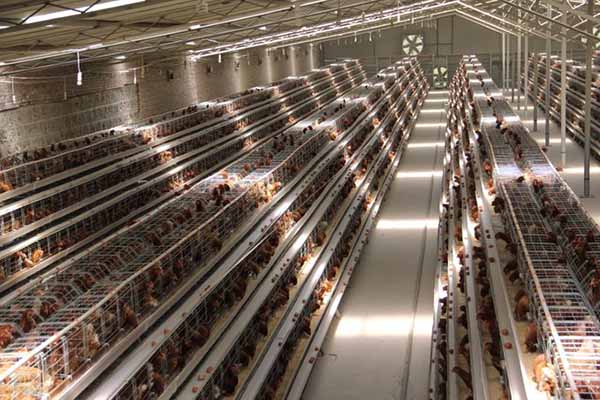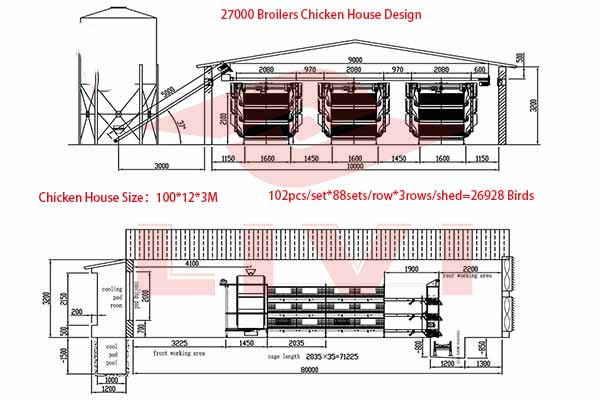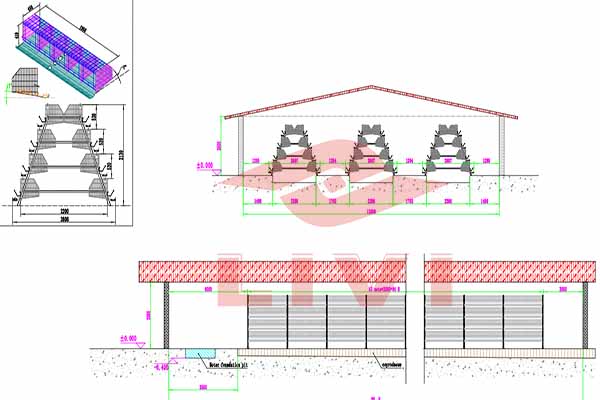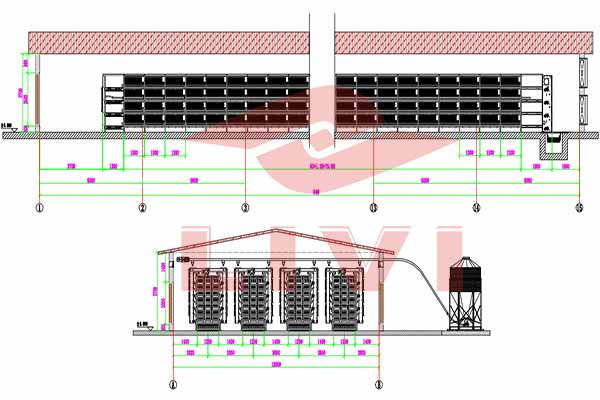Automatic Poultry Cage System for 20,000 Chickens in Kenya: A Comprehensive Guide
Introduction
In the rapidly growing poultry industry in Kenya, the demand for efficient and automated systems is on the rise. With the capacity to house up to 20,000 chickens, an automatic poultry cage system is a game-changer for both large-scale and small-scale farmers. This article will delve into the benefits, components, and considerations for implementing an automatic poultry cage system in Kenya.
Key Benefits of an Automatic Poultry Cage System
– Increased Efficiency: Automation reduces the labor required for feeding, watering, and cleaning, resulting in significant time and cost savings.
– Enhanced Sanitation: Automated systems ensure better hygiene by minimizing human contact and reducing the risk of disease transmission.
– Improved Productivity: With precise control over feeding and watering schedules, chickens can grow to their full potential, resulting in higher egg yields and meat production.
– Energy Efficiency: Automated systems often use less energy compared to traditional methods, reducing operational costs.
Components of an Automatic Poultry Cage System
– Feeding System: Distributes feed to chickens automatically at specified intervals.
– Watering System: Provides clean water to chickens using automated systems, reducing the risk of water contamination.
– Environmental Control: Maintains optimal temperature, humidity, and air quality for the chickens.
– Ventilation System: Ensures proper air circulation to prevent the build-up of ammonia and other harmful gases.
– Cleaning System: Automated systems can clean the cages efficiently, reducing the risk of disease transmission.
Considerations for Implementing an Automatic Poultry Cage System
– Initial Investment: While the initial cost may be high, the long-term savings on labor, energy, and disease prevention can make it a worthwhile investment.
– Space Requirements: An automatic poultry cage system requires ample space for the chickens to move around and breathe comfortably.
– Technical Expertise: Hiring skilled personnel to install, maintain, and operate the system is essential for its success.
Case Study: A 20,000 Chicken Capacity Automatic Poultry Cage System in Kenya
A successful implementation of a 20,000 chicken capacity automatic poultry cage system in Kenya resulted in the following benefits:
– Increased Egg Production: A 20% increase in egg production was observed within the first year.
– Reduced Labor Costs: The farm was able to cut labor costs by 50%.
– Improved Chicken Health: The risk of disease transmission was significantly reduced, leading to a healthier flock.
Conclusion
An automatic poultry cage system for 20,000 chickens in Kenya is an excellent investment for any poultry farmer looking to increase efficiency, productivity, and profitability. By carefully considering the components, benefits, and considerations of such a system, you can make an informed decision for your farm.
To discuss your specific needs and get a free design and equipment quote for an automatic poultry cage system, please leave a comment below or contact us at Livi Mechanical.





